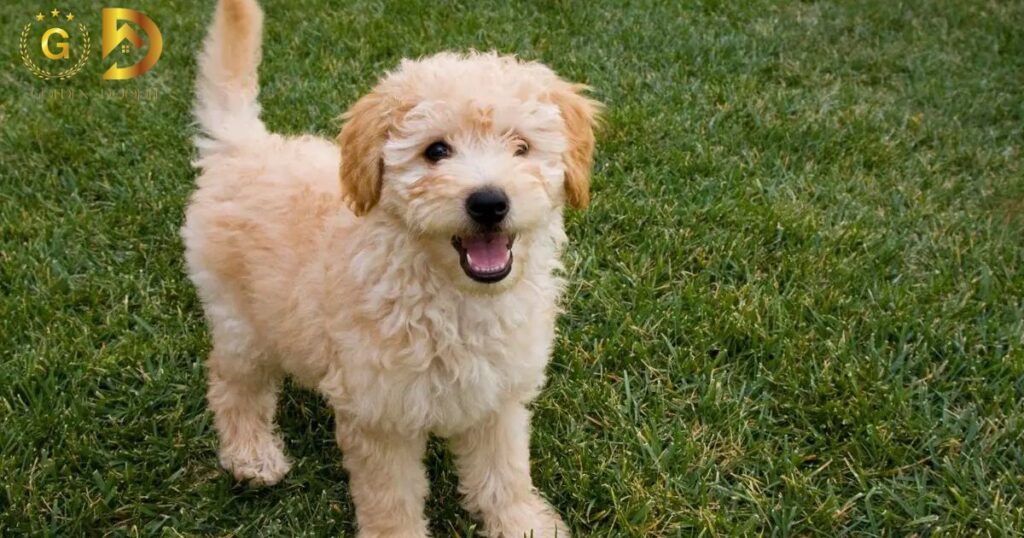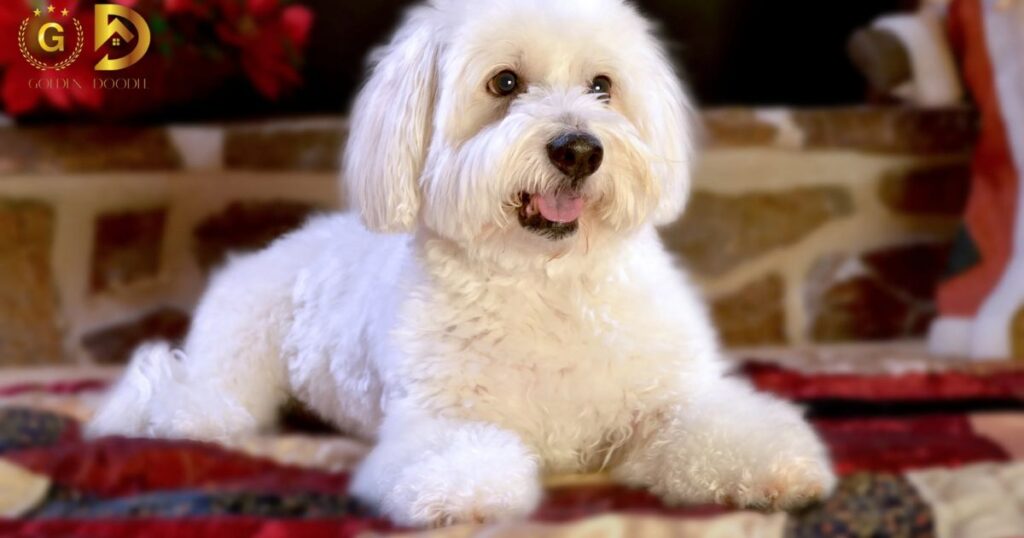Goldendoodles typically stop growing around 12-18 months of age.During this period,they go through puppy, adolescent, and adult stages,reaching their full size and maturity.Factors like genetics, nutrition, and overall health can influence their growth rate.
Curious about your Goldendoodle’s growth journey?The question lingering in every pet owner’s mind is,When do Goldendoodles stop growing?Unlocking the mystery of their development holds the key to understanding their adorable transition from playful puppies to full grown, cherished companions.Dive into the fascinating timeline of a Goldendoodle’s growth and discover the secrets behind their journey to adulthood.
The growth trajectory of Goldendoodles is a common inquiry among pet enthusiasts.When do Goldendoodles stop growing?is a question that encapsulates the curiosity surrounding these beloved hybrid dogs.Understanding the pivotal period of their development, typically between 12 to 18 months, unveils the stages leading to their full size and maturity.Factors like genetics and health play a crucial role in determining the cessation of their growth.
Rapid growth and development
The popularity and demand for GoldenDoodles, a crossbreed between Golden Retrievers and Poodles, have experienced rapid growth and development in recent years.This hybrid breed combines the intelligence and hypoallergenic traits of Poodles with the friendly and sociable nature of Golden Retrievers, making them an ideal choice for families and individuals alike.The surge in interest can be attributed to their charming personalities,low shedding coats, and adaptability to various living environments.
Breeders have played a crucial role in the rapid development of GoldenDoodles, focusing on enhancing desirable traits and maintaining their health.This commitment has led to the creation of different generations,each with unique characteristics.The versatility of GoldenDoodles,as both loving companions and skilled service or therapy animals, further contributes to their widespread appeal.As this breed continues to capture the hearts of dog enthusiasts around the world,it exemplifies a remarkable example of rapid growth and development within the canine community.
Age range: 0-6 months

Golden Doodles in the age range of 0-6 months,it’s an adorable phase of puppyhood filled with discovery and growth. During these early months,these fluffy companions are at their most playful and curious.They require a lot of care, attention, and love from their owners.
Feeding is crucial at this stage, with a focus on high quality puppy food to support their development. Regular vet checkups, vaccinations, and grooming, including addressing the question “How Long Do Goldendoodles Live” are essential to ensure they grow into healthy and happy adults. This period also marks the time for basic training and socialization, helping them become well-behaved and sociable pets.
As they go through the teething phase, providing appropriate chew toys can alleviate discomfort. Additionally,creating a safe and comfortable environment for them to explore helps foster a strong bond between the puppy and its human family.This early stage is a precious time to create lasting memories and build the foundation for a lifelong companionship with your Golden Doodle.
Continued growth but at a slower pace
GoldenDoodle grows older, typically beyond 6 months, you can expect continued growth,but at a slower pace.During this stage,the rapid puppy development starts to transition into a more steady and measured growth.While they may not be adding inches as quickly, their personality and individual characteristics become more pronounced.
Nutrition remains vital during this period,ensuring a balanced diet to support their overall health.Regular exercise is still crucial, but it may be adjusted to suit their changing energy levels. Paying attention to their changing needs and adjusting care accordingly is key.Routine veterinary checkups are important to monitor their well being and catch any potential health issues early on.
Training and socialization efforts should persist to reinforce good behavior and strengthen the bond between you and your furry friend.As your Golden Doodle enters this phase of continued but slower growth,it’s a wonderful time to witness their unique traits and qualities blossom, making them a cherished member of the family.
Influence from parent breeds
The influence from parent breeds plays a significant role in shaping the characteristics of GoldenDoodles.As a crossbreed between Golden Retrievers and Poodles, these dogs inherit traits from both sides, creating a unique blend that enthusiasts find appealing.The intelligence, friendliness, and gentle nature of Golden Retrievers contribute to the sociable and affectionate demeanor often observed in Golden Doodles.
On the other hand, the hypoallergenic and low shedding coat comes from the Poodle lineage. This trait is especially appreciated by those with allergies or a preference for minimal shedding. The size, color, and coat type can vary based on the specific pairing of Golden Retriever and Poodle, showcasing the diversity within the breed.
Understanding the influence from parent breeds is essential for prospective GoldenDoodle owners as it provides insights into the potential temperament, grooming needs, and overall characteristics of their furry companions.This mix of traits from two beloved breeds results in a charming and adaptable pet that brings together the best of both worlds.
Standard Goldendoodles

Standard Goldendoodles refer to a specific size category within the popular GoldenDoodle breed, known for their friendly nature and low-shedding coats.In terms of size, Standard Goldendoodles are larger compared to their Miniature and Toy counterparts.Typically, they stand around 20 to 24 inches at the shoulder and can weigh anywhere from 50 to 90 pounds or more, depending on various factors such as genetics and individual growth.
These dogs are the result of breeding a standard-sized Poodle with a Golden Retriever.The aim is to combine the intelligence and hypoallergenic qualities of the Poodle with the friendly and sociable nature of the Golden Retriever.Standard Goldendoodles are known for their versatility, excelling as both loving family pets and potential candidates for service or therapy work.
Maintaining their health and well being involves regular veterinary check-ups, a balanced diet, and proper grooming due to their wavy or curly coats.Training and socialization are essential during their puppyhood to ensure they grow into well mannered and sociable companions. Standard Goldendoodles,with their medium to large size and amiable personalities,make for wonderful additions to families looking for an affectionate and intelligent canine companion.
Observing physical and behavioral changes
Observing physical and behavioral changes in your canine companion is a crucial aspect of responsible pet ownership.Regular monitoring allows you to stay attuned to your dog’s well being and address any potential concerns promptly.
Physically, changes may include alterations in weight, coat condition, or the appearance of lumps or bumps. Keeping an eye on these aspects helps in detecting signs of illness, nutritional deficiencies, or skin issues early on.Regular veterinary check-ups play a vital role in ensuring that your dog’s physical health is in optimal condition.
Behavioral changes can indicate shifts in mood, stress levels, or potential underlying health issues.For example, sudden changes in appetite, energy levels, or alterations in social behavior may warrant attention.Understanding your dog’s typical behavior and noting any deviations allows you to provide appropriate care and seek professional advice if needed.
Creating a habit of regular observation and addressing any observed changes promptly contributes to maintaining your dog’s overall health and happiness.This proactive approach strengthens the bond between you and your furry friend while ensuring they lead a fulfilling and comfortable life.
Adjusting diet and exercise based on developmental stage

Understanding Developmental Stages
Observing your dog’s developmental stages is crucial for tailoring their diet and exercise routine.Puppies, adolescents, adults, and seniors have unique nutritional and activity requirements.
Puppyhood Nutrition and Play
During the puppy stage (up to 12 months), focus on high-quality, balanced puppy food to support growth.Adequate playtime is essential for developing coordination and social skills.
Adolescent Energy Needs
As your dog transitions to adolescence (1-2 years), adjust their diet to support steady growth. Engage in regular, varied exercises to channel their abundant energy positively.
Adult Maintenance and Activity
Adult dogs (2-7 years) benefit from a balanced adult diet. Maintain a consistent exercise routine to manage weight and promote overall health.
Senior Care and Moderate Exercise
For senior dogs (7 years and above), consider a senior-specific diet and adjust exercise intensity.Gentle activities like short walks help maintain mobility without straining aging joints.
Frequently Asked question
When do Goldendoodles typically reach their full size?
Goldendoodles usually stop growing between 12 to 18 months, but this can vary based on factors like genetics and individual development.
Is there a difference in growth between Standard, Medium, and Miniature Goldendoodles?
Yes, the size category influences growth; Standards may take longer to reach full size, while Miniatures tend to stop growing earlier, around 10-12 months.
What role does genetics play in determining the growth timeline of Goldendoodles?
Genetics significantly influence growth; puppies with larger or smaller sized parent breeds may exhibit different growth rates, impacting when they reach full size.
Can diet affect the growth rate of Goldendoodles?
Yes, a balanced and nutritious diet is crucial for proper growth; providing the right nutrients supports healthy development and can influence when a Goldendoodle stops growing.
How can I monitor my Goldendoodle’s growth progress?
Regular veterinary checkups, observing physical changes, and adjusting diet based on developmental stages are key in monitoring a Goldendoodle’s growth and ensuring overall well being.
Conclusion
In conclusion, the growth of Goldendoodles typically ceases between 12 to 18 months, with variations based on factors like genetics, size category, and individual development.Monitoring their growth through regular veterinary check-ups, observing physical changes, and providing a balanced diet are essential for ensuring a healthy and well managed developmental trajectory. Understanding the nuances of when Goldendoodles stop growing allows owners to provide optimal care and anticipate the transition into adulthood for their beloved pets.

GoldendoodlePet specializes in expert Ruby Reverie pet care advice and services. With 8 years’ experience, the author offers invaluable insights and guidance.











